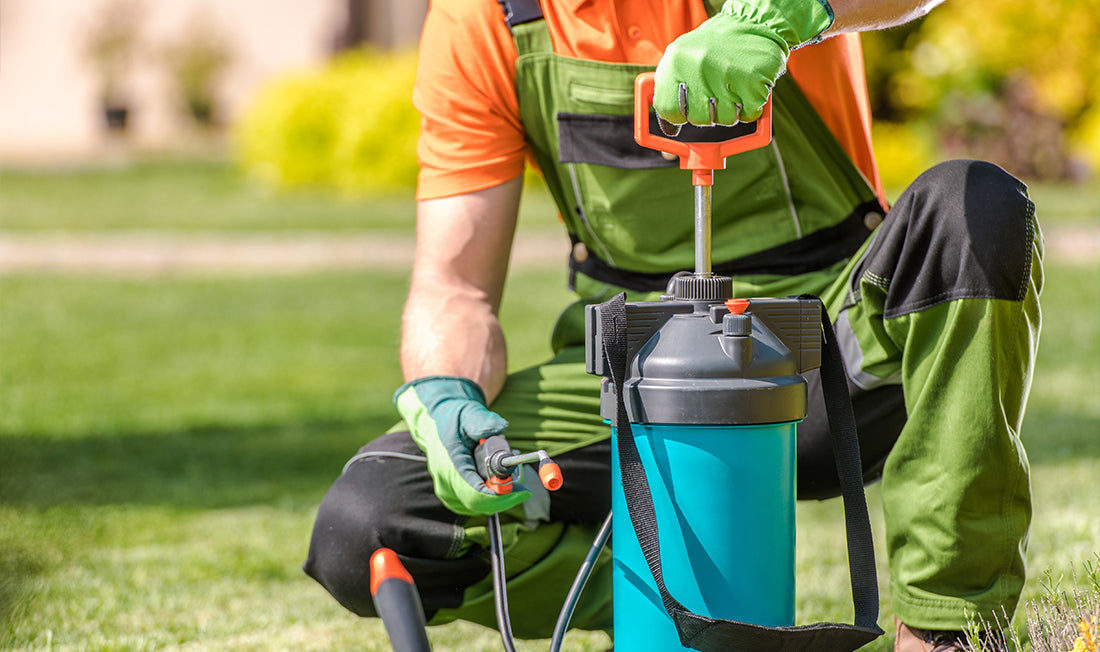Springtime is right around the corner. Depending on your location in the United States, you may not be far off from making pre-emergence weed control applications. At the very least, it’s not a bad time to start planning what product you’re going to use and when you will be looking to apply it. So in order to help assist you with making the most effective pre-emergent weed control application that you can, in this article, we will be discussing all things springtime pre-emergence.
How Do Pre-Emergence Herbicides (PREs) Work?
Pre-emergence herbicides are products that are designed to be applied to the soil, taken up by weed seeds immediately upon germination. Once taken up, they inhibit the subsequent root growth of the weed into which it was absorbed. So, technically PREs don’t inhibit seed germination; they inhibit subsequent growth after germination.
Because PREs are taken up by the weed from the soil, two things need to occur in order to ensure the best possible weed control. The first is that the product should be watered into the soil. A PRE will not be very effective if sprayed onto the soil and then left on top to degrade. Watering the product in, allows it to make its way through the soil into the seedbed, where the germinated seed will be exposed to it. The second thing we want to ensure is that the PRE is worked into the soil, prior to the seed germinating. The PRE needs to be there, ready for uptake as soon as possible, for best control. Pre-emergence herbicides may lose almost all of their effectiveness if applied too late. Some PREs have activity on younger plants but don’t bet your money on it, get them out earlier rather than later.
When Should Pre-Emergents Be Applied?
This answer mostly depends on which weed you’re trying to control. Is it safe to assume that if you’re looking into pre-emergence herbicides, then you might be trying to control annual grassy weeds like crabgrass (Digitaria ischaemum; D. sanguinalis) or how about goosegrass (Eleusine indica)? These are probably two of the most widely sought-after weeds to control, and they’re best controlled first with PREs.

Typically when thinking about crabgrass germination, it is widely accepted that when soil temperatures have warmed to a sustained temperature of around 55 degrees F, crabgrass germination will occur. This means we want our PRE down and watered into the soil prior to this happening. If you don’t have a soil thermometer, here is a great tool for soil temperatures.

Goosegrass, on the other hand, is a little more patient in the spring and will wait until soil temperatures warm past 60-65 degrees F for germination. One strategy that can be effective for increasing the window of control for your PRE application, is to take the full application rate and split it in half. Apply the first half of the total rate at the normal time, before the soil hits 55 F, and then wait a month and apply the second half of the treatment. This can be effective for catching any straggling crabgrass and also catching the later-germinating goosegrass. As far as dallisgrass (Paspalum dilatatum) goes, well, that’s a perennial weed. We wish we had a good answer for you, but PREs are hard to use for the control of perennial weeds.
What are the Types of Pre-Emergents
Three of the most widely used pre-emergence herbicide active ingredients for turfgrass are:
- Prodiamine
- Pendimethalin
- Dithiopyr
All of these active ingredients offer great crabgrass control, along with control of a variety of additional weeds. If you’re considering a product for pre-emergence weed control and it has one of the previously listed active ingredients, you’ve made a great start.
Once the summer weeds are under control, you’ll have more time to make that fertilizer application that will take your lawn to the next level. Or, contact us today for your free personalized lawn care plan that will make you the envy of the neighborhood.









